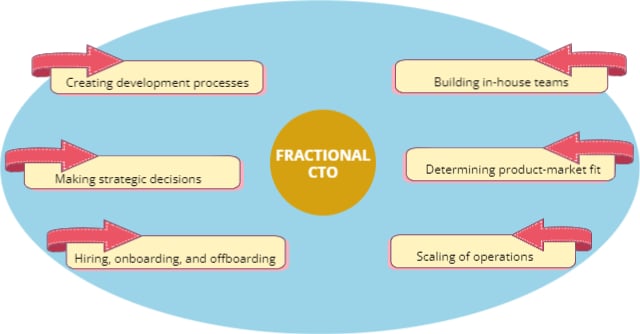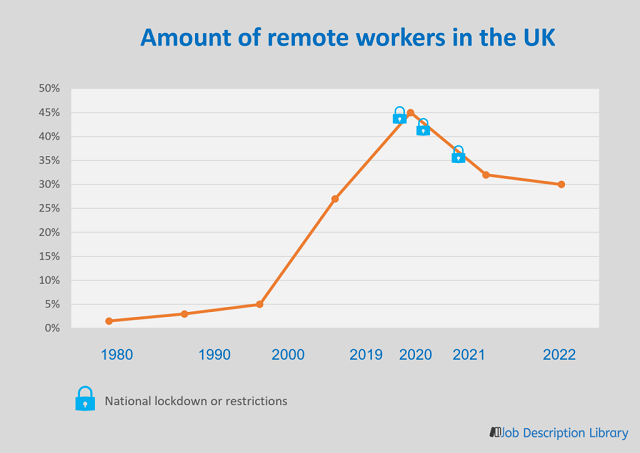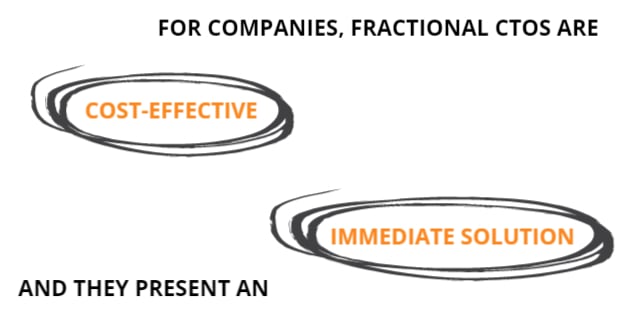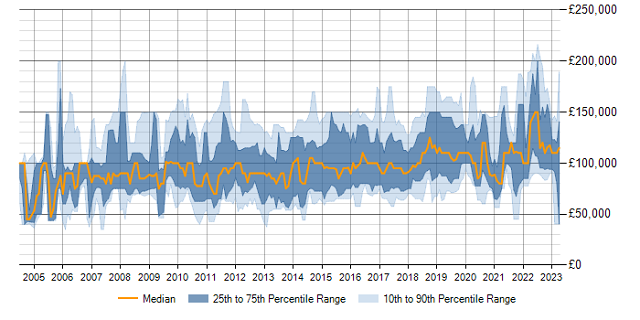A Fractional CTO is a chief technology officer who provides on-demand services to a company or organization. In other words, it is a freelance contract that implies working for a fraction of the time and cost and just on the part of the project as opposed to full- or part-time CTO positions.
This role can be performed remotely or on-site, depending on the company’s needs. Lately, however, a growing number of professionals are seeking remote positions exclusively because they enable greater flexibility that radically improves the work-life balance.
In short, FCTOs are responsible for overseeing the organization’s tech strategy, direction, and operations. They help companies with tech-related tasks such as:

As an FCTO, you are bringing your expertise and experience to help companies:

In our talks with tech leaders from all over the world these past few years, we have discovered that there are a few universal expectations from an FCTO:
Experienced chief technology officers may present a heavy burden on the, usually, limited startup budget. Additionally, the company may not have the need yet for a full-time CTO role.

In these circumstances, hiring someone to work only 15-20 hours a week can be a win-win situation for both parties. On the one hand, you can charge more per hour than possible in a permanent contract. On the other, the total cost for the company is less than it would be for a traditional position.
The paradigm has changed. Work is not necessarily where we go anymore but what we do. That’s one of the reasons why remote/hybrid working is quickly becoming the model of choice for not only a growing number of companies of all sizes but also seasoned professionals.

In such a scenario, organizations are removing geographical barriers and hiring talent from around the world at competitive prices. This, in turn, is allowing them to slice large projects into chunks and hire multiple fractional tech leaders to develop, oversee and manage individual road maps.
To put it bluntly, fractional CTOs are a) cost-effective, and b) represent immediate solutions for companies that require high-level tech management without the commitment and cost of an in-house employee.

This, basically, means that FCTOs are primarily engaged by SMBs that do not have the resources or need for a more permanent role but still require strategic technology leadership and guidance. Lately, however, we have also seen large companies offering this specific position.
An ICTO is a temporary or transitional tech leader. For example, one can be appointed when the current tech leader is on leave or when a role suddenly becomes vacant. Another instance would be a crisis or significant change.
ICTOs are typically engaged for a defined period. They are responsible for managing the following:
The significant difference between the two is that an ICTO controls the helm while a fractional CTO is responsible for just one segment of navigation.
Additionally, an FCTO may operate on an ongoing basis while an ICTO is hired for a specific and relatively short period.
According to the recent report by Reed, a headhunting agency that tracks salaries across industries in the UK, in 2023, a London-based tech leader working in a company with less than 1,000 employees, should earn £96,080 plus a 12% bonus in the private sector or £75,950 and 27,90% pension addition in the public sector.
Across the Atlantic, however, it is a bit of a different story. For instance, a head of tech working in a US-based company of the same size should average $170,000 in 2023 or $74.00/hour.

The rates depend on experience, education, certification, and other relevant factors such as the company’s location and size; although, the last two are not necessarily the rule. A good example is the Idaho-based (US) software development company Corporate Tools, which pays tech leaders $172/hour.
As with every other contract type, there are advantages but also downsides to working as a fractional CTO.

For those without a network, the quickest way to find fractional CTO jobs is through job boards like:

It is also wise to join CTO groups like ours here at the Academy and attend specialized events where you can participate in discussions and establish long-lasting relationships with your peers. In our experience, there is no better way to get a timely tip for a new job opening.
Having an industry-recognized certification makes this part a whole lot easier; all you have to do is send a cover letter to compete on a tender.
Remember, you are not alone and the only way to get that interview is to send an attention-grabbing cover letter.
The first rule of cover letters is that it is not about you per se, but about the job and the company you are applying to. In other words, you want to explain in less than 250 words how your experience and expertise solve their problems. That’s the only thing they want to hear.

You should clearly demonstrate:
Here are a few additional cover letter tips:
If you are favouring the flexibility of remote working; then offering your experience and expertise as a fractional CTO should be your top priority. The trends are showing that demand for this particular contract type is steady. And, with such a high number of emerging tech startups, it shouldn’t be too hard to land your next job.
Finally, If peer advisory could be beneficial to you in any way, book a free orientation call with our Senior Team. It is an opportunity to discuss the most optimal future steps in your career.
90 Things You Need To Know To Become an Effective CTO

London
2nd Floor, 20 St Thomas St, SE1 9RS
Copyright © 2024 - CTO Academy Ltd